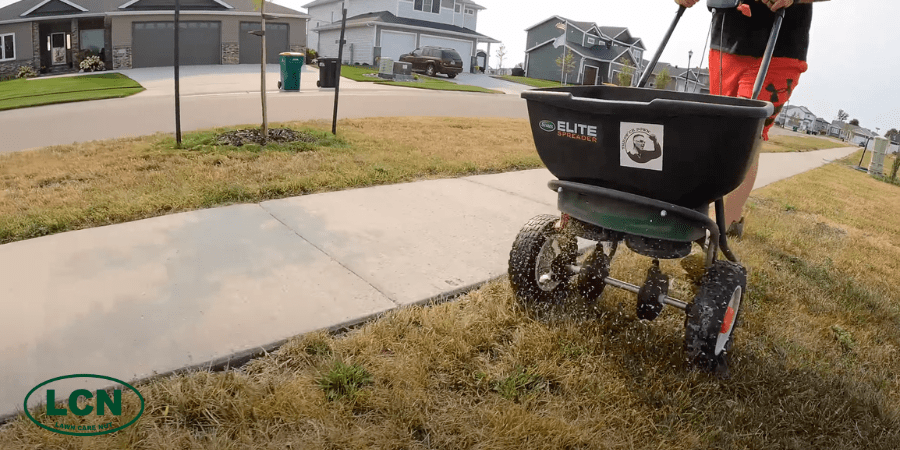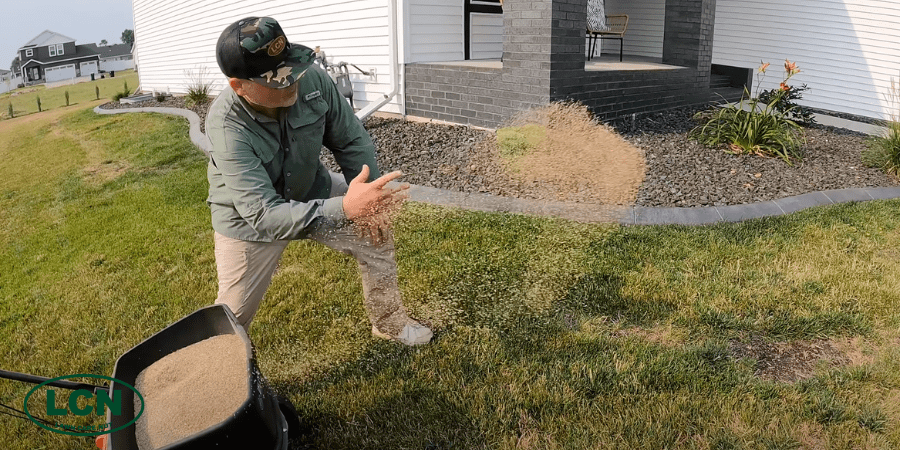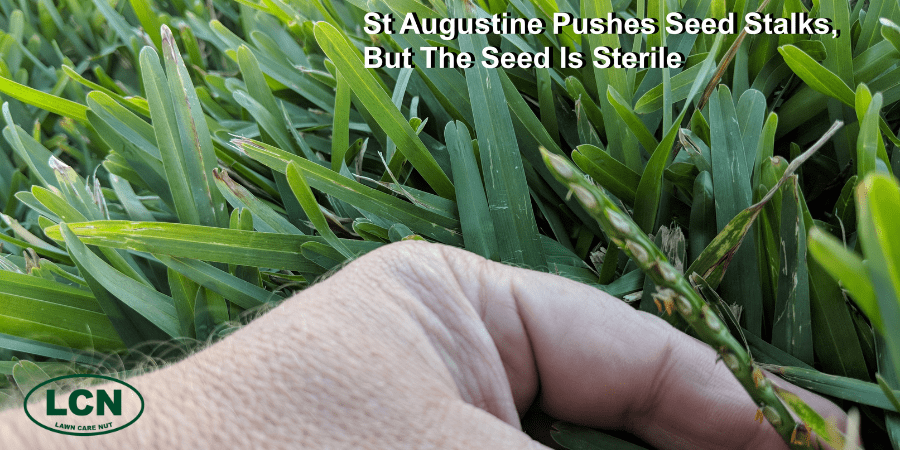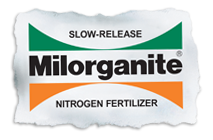How to Seed Your Lawn in Spring
- "The Lawn Care Nut"May 11, 2023
Growing grass from seed in spring, is it a good idea, why or why not? Let’s get into it.
Seeding Cool-Season Lawns in Spring
First off, I am talking to those of you who have cool season grasses (Check out info for warm-season lawns farther down.): Kentucky Bluegrass, perennial ryegrass, and turf-type tall fescue. Overseeding is a great way to thicken up a thin cool-season lawn.
However, if you have followed my strategies for any length of time, you know that I am typically against spring seeding and instead prefer you to wait until fall time. Now don’t get me wrong, spring is an EXCELLENT time to germinate some seed in the lawn. Nature knows this too and that is why you get a huge onslaught of weeds in the spring. Everything from dandelions and clover to crabgrass likes to grow in spring and take up space.

Seeding in spring means that your grass seed is going to have to compete with all of these weeds for space in the soil and for sunlight from above. It can be tough!
Another challenge is that in spring, even here in May, you still have the risk of a hard freeze overnight and if that comes when your new seedlings have just started to move, it can kill them before they even get a chance to grow.
On the other end, if you wait and overseed your lawn in the fall time, you can throw down at the end of summer or early fall when you have no chance of freezing or frost and much less weed pressure at the same time.
All that said, there is a risk/reward with everything you do in lawn care and you will find many folks who indeed have had great success with seeding a cool season lawn in spring. So if you are going to do it, here’s what I recommend.
- Seed around Mothers Day when the chance of freezing or frost is nearly gone.
- When you do seed, use Tenacity herbicide (mesotrione) on seed day to help knock out existing weeds and prevent more for 30 days. Tenacity (mesotrione) is the only herbicide safe to use in conjunction with seeding. Read the label before applying.
- Use slow-release Milorganite as your starter fertilizer because it will not only help your new grass root, it will also nourish and feed your existing turf at the same time.
- Get your watering plan ready. In May you should be getting lots of rain help but if you hit an early summer dry spell, having your irrigation strategy set up will save your grow in.
One last thing to consider is “do you even need to seed?”
My basic rule of thumb is that if you have 30% turf scattered throughout the lawn, you can push that existing turf with nitrogen fertilizers like Milorganite and get it to thicken up pretty well without seeding. If you do happen to have a few spots still thin come fall, then you can seed those areas to finish off the process.
Seeding Warm-Season Lawns in Spring
Straight up here, there is no St Augustine grass seed available. It doesn’t exist. Zoysia seed exists but is very hard to find. So when I am talking about seed for warm season turf, I’m talking about seed that is easy to find at big box stores and that is typically bermuda, centipede and bahia grass seed.

These grasses can and should be seeded in the later spring or early summer and NOT the fall time. That is because warm-season grasses have a very different growth habit. Cool season perennial ryegrass for example, is a “bunch type” grass which means it grows root and blades, down and up and that’s it. It remains in a bunch and when thousands of those bunches are grown close together, it forms a lawn.
Warm season grasses on the other hand, spread far and wide by creeping across the ground sending out runners called rhizomes and stolons. This growth habit dictates that you apply much less seed to a lawn in order to give the new warm season grass plants room to spread wide after they send down roots and some top growth to grab sunlight.
This process of growing roots, top growth, rhizomes and stolons takes much longer therefore you have to start in the later spring to ensure you have enough time for the lawn to “fill in” as rhizomes and stolons are sent in every direction.
If you are going to overseed a warm-season lawn in spring, here are some tips:
- Seed in April or May to ensure you have enough time during the season for it to spread and mature. Summer also has the longest daylight hours which warm-season turf will need.
- You can use Tenacity (mesotrione) when seeding centipede and bermudagrass but be aware that some turf injury (whitening) may occur to your existing turfgrass. This will go away with regular mowing. You should not use Tenacity if seeding bahia grass.
- With the added heat in the south, be sure you are ready to irrigate regularly for at least 3-4 months. Do not make the mistake of stopping short on watering during the season.
- Apply Milorganite as your starter fertilizer to fuel the new seed and existing turf.
Now before you go out and start slinging bermuda or centipede seed everywhere, think about this: You are planting a turf type that is going to spread rhizomes and stolons to take ground. But remember, it first has to germinate then root in and push up some top growth to grab sunlight to fuel those runners.

So I ask, “do you have some turf already existing in your lawn scattered sparsely throughout?”
If so, doesn’t it seem logical to just feed that existing sparse turf and encourage it to push out the rhizomes and stolons? If you think about it, that existing turf already has some roots and tops and all it really needs is your encouragement to get it to run! That encouragement comes from applying fertilizer every month but also from frequent mowing. The more you mow, the healthier and thicker your warm-season turf will grow and that may mean no seed is needed at all.
Warm season turf, especially bermuda, is super aggressive and can take a lot of ground without the addition of new seed. Just something to think about that may save you some time and money.
I’ll see you in the lawn!

